#freshwater leech
Note
if it hasn't been asked already (sorry cannot figure out how to search)
chapter one of Alice in Wonderland: https://www.cs.cmu.edu/~rgs/alice-I.html
String identified:
CATtatAcaggtgttttgttaaagtgtctcatttaagttactcattaattatgtActtctcatacgaacttaaatttaagaacatttgttgacgtaatattacTatgaatatActtcttatatatattaaaattgttatatccttatgttaatttattttatatattatactataatcttatcatctaattatActattttaactataaatttaatcatctaatcttattagtctaactattatatattttaagattgtatccgatcatttAcattccgtatgttagaTatttagtataattatAcatatttattgagattaattattatatataggtattttaatatacgtttatatatgtatttatctatttcaaataaactggtaataataaAGAAAttgatatttattttaagaagtttttcaaatttgtActatcaaatattgtgtaatatattaatgatttttcattactaaattaatgttgatcttatttattatAcaatatgtttcatgtatagttggatatttttagactctattatattgttacttatattgtgttAcaaatattagttttgttcgatatgaagaaagttgtatttctagttatattaaTAtattaatgatatgttattatatgttaatatattatctaaataaAtaaattctaacctgaagtgtatcaagtAatagatttgtagttaaatttTatgtAcgatagagaactgttaatcattacattataatTactaaatgtcatcaatatatatcatatatAAcgatgtatatagtaatacatatatcatatatatatatcatactattttcattcattttatagaatgtatataagaataaagtatattttataatttcaaatcaaataaAcatattattatttaaaaaatgaagattatatgtgtTatatttaatActaatttataattacaaattgttgactttcttatagtagacataaaggtTatattacaAcaataatttgaatgatgttagacaatttggtaaagatatgtctatgaActtgtatattgtgtttataattctagtatatataatttattctcaactaattcataattattcgttttgtcatgatgttttAcgtctaActatatttaaaagtcagtaaattaagtaagtttgaagtgtttataaaaatagtgtatctatctgtatgtaaagtgtgtActttttctatctctgattatgaaattatAcagtttattgaTtatgttttactttaaggtattataatattgtcttatttttcctaataAcatctttaaaattatttagttActagtttaatattttAcatggttatataattataaactttatcagttaatatataattgacattttatagttcatatatttgatatctgtataaagtttatcattatatctatagtattttataActttattagtctaactatactatctaaatttattttattatacgaActttgatcAtaatcgaacgtatttgttatatgtggtgtttttatgatatattaggtattattatttgtaActggtatgtacaattAttacattaacaattcatctagcatgAtagtattgacggttgaatctaaAcgtttagtttttgatactttatctactcttatgtgaatttctgttattataattttgttttgatacCtcgtataActataatattgagagactgtatcatgtatactgtaagcatagactaagagattccatgtttttgtActttttagttactaattgatatagttatataacactATatacatattaAcatagagcaactatagacacttagtttgaatcacaatatttaaatcacagattatcataggaatttatatattgaaatcatAcagtcttactgtgtttatgtatatttattgtcattatca
Closest match: Erpobdella octoculata genome assembly, chromosome: 7
Common name: Freshwater Leech
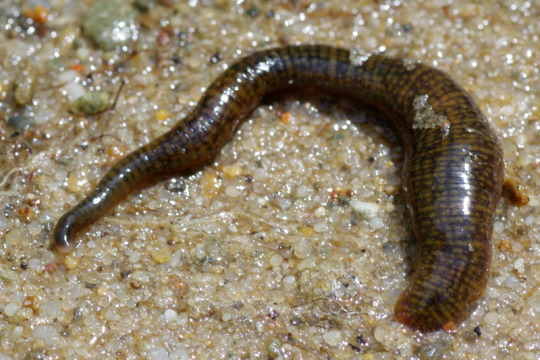
(image source)
#tumblr genetics#genetics#asks#requests#sent to me#shark-making-soup#alice in wonderland#leeches#worms#segmented worms#parasites#leech#freshwater leech
789 notes
·
View notes
Text


Smooth turtle leech | Haemadipsa picta
X
46 notes
·
View notes
Text
Today I want to talk about the Pacific Northwest Tree Octopus (Octopus paxarbolis).
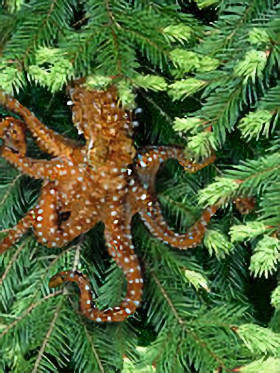

OK, so for those who don't know, the PNW Tree Octopus was an internet hoax created in 1998 consisting of a website detailing the animal's life history and conservation efforts. It's completely fake - saying that up front. This animal never existed.
But if you look at this from a speculative biology standpoint? It's genius.
There is one, and only one, thing preventing Octopus from colonizing and being hugely successful in terrestrial environments in the PNW, and that's the fact that no cephalopod has ever been able to overcome the osmotic stress of inhabiting freshwater. We don't know why this is; other mollusks evolved freshwater forms just fine. But if you hand-wave away that one, single limiting factor, the PNW is just primed for a terrestrial octopus invasion.
The Pacific coast of North America is an active tectonic boundary, meaning the coast transitions pretty much immediately into the Cascade and Coastal mountain ranges (contrast with the east coast and its broad Atlantic plain). It's also a lush temperate rainforest, with very high precipitation. This means lots and lots of high-gradient mountain streams with lots of waterfalls and rapids and cold, highly oxygenated water, and not as many large, meandering rivers.
This has important consequences on the freshwater fauna. For one, there are not many freshwater fish in the Pacific Northwest - the rapids and waterfalls are extremely hard to traverse, so many mountain streams are fish-free. There also just isn't much fish diversity in the first place - there's sturgeon in the big rivers, salmonids, a few sculpin and cyprinids and... that's pretty much it. These cold northern rivers are positively impoverished compared to the thriving fish communities of the Mississippi or Rio Grande.
Few fish means few predators, and depending on the size of the first freshwater octopus, salmon and trout just wouldn't be much of a threat. And while these rivers don't have much in the way of fish diversity, there's lots of prey available - crayfish, leeches, mosquito larvae, frogs and tadpoles, water striders, and other aquatic insects, just to name a few. So the first Octopus pioneers to invade the rivers would be entering what essentially amounts to a predator-free environment with lots and lots of food and no competition. Great for colonization.
These ideal conditions get even better once you get up past the rapids and waterfalls, since there's no fish whatsoever in those streams. Octopus, with their sucker-lined arms, are perfectly equipped to navigate fast-moving, rocky-bedded streams and climb up cliffs. They'd also be well able to traverse short stretches of dry ground to access even more isolated pools and ponds. In fact, once Octopus overcome the osmoregulation problem there's nothing at all preventing them from colonizing land in earnest, since the PNW rainforests are so wet; there's no danger of drying out.
Finally there's the question of reproduction. Octopus are famously attentive mothers, because they need to keep the water around their eggs moving and well-oxygenated. In a mountain stream, this wouldn't be an issue, because the cold, turbulent water holds lots and lots of oxygen. Breeding in high mountain streams would be ideal, and the mothers might not even need to attend to their eggs, freeing them up to evolve away from semelparity and allowing them to reproduce more than once in their lives; their populations would thus increase rapidly and dramatically.
I think, if octopus managed to invade freshwater ecosystems in the PNW, it would dramatically change the ecology much like an invasive species. They'd be unstoppable predators of frogs, bugs, slugs, maybe even larger animals like snakes, birds, and small mammals. Nothing would eat them except maybe herons, and things like bears and raccoons would give them a wide berth due to their venom. They would rule that landscape.
The tl;dr is that the PNW is primed for invasion by cephalopods, if only they could manage to overcome the osmoregulation problem and live in freshwater. If the Pacific Northwest Tree Octopus really did exist, it wouldn't be a shy and reclusive species on the brink of extinction; it would be a pest, an invasive, overpopulated menace you couldn't get rid of if you wanted to. I can just imagine them crawling up onto people's bird feeders and either stealing the nuts or luring in unsuspecting sparrows and starlings. They would sit in the trees and throw pinecones at hikers for fun. They would be some unholy mixture of snake and slug with the personality of a magpie and I am incensed that they only exist in fiction.
#long post#octopus#speculative biology#speculative evolution#spec bio#spec evo#pacific northwest#pacific northwest tree octopus#truly a shame that there are no freshwater or terrestrial cephalopods
294 notes
·
View notes
Text
Around a dozen people in my notes lately weren’t entirely sure how a leech and a lamprey are different so I shall talk about my two favorite wet vampires, with “scary” images only under a cut!

LAMPREY:
A vertebrate like you and me!
Big googly eyes
Rows of small, round gill openings
Having gills, it’s one of the vertebrates we call a “fish” and it’s sometimes referred to as a “lamprey eel”
Technically not an eel or related to anything else on earth other than hagfish!
Together the lampreys and hagfish are the last remaining Agnathans, jawless cartilaginous animals older than sharks!
They are quite big, several feet in length at maturity!
No species of lamprey is known to deliberately bite humans; they are specialized in preying on other cold-blooded, gilled aquatic vertebrates, like all those newfangled fish with jaws.
Not all species actually feed as adults, though.
Young lamprey are blind, transparent filter feeders that live buried in sediment!
Despite no direct relation, many species migrate from ocean to freshwater river to spawn, exactly like almost all true eels.
Good parents. Will use their suckers to build a nest out of stones and protect the eggs!
Messy and grisly vampires. Again nothing to worry about if you aren’t a fish, but those that still feed in their mature form rasp a large wound in the victim to vacuum up blood and even tissue. This is frequently deadly to smaller river fish such as immature bass and trout.

LEECH:
Annelids closely related to earthworms!
A sucker at the head end houses the mouth. On the tail end is a second sucker to help grip surfaces or “walk” like an inchworm.
Usually have a bunch of tiny speck eyes around the head, but some have eyes down the body and on the rear end too!
Most are amphibious to some degree and some live their whole lives on land in moist environments.
Only some species drink blood. Most leeches are predators of snails, worms and aquatic insects.
ALSO good parents! Some leeches leave a cocoon full of babies with its own food supply inside, like a yolk, others carry their young on their underside until they’re big enough to fend for themselves.
Careful and polite vampires. Those that drink blood create only a tiny little pinhole with their bite, using a powerful anticoagulant so blood flows freely from the surgically delicate wound. Once full, they detach and drop off on their own.
MOUTH COMPARISON: (MAY DISTURB SOME PEOPLE???)
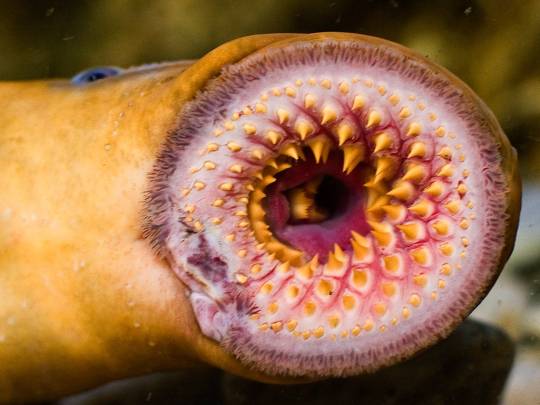
LAMPREYS have the big, gaping circular mouth full of frightening looking teeth, borrowed by countless pop-culture monsters and, incorrectly, most pop-culture leeches.

“JAWED LEECHES,” which include most of those that will suck your blood, have a mouth so tiny it’s often not even visible, but it is surrounded with three very tiny jaws in a triangular arrangement, each covered in microscopic teeth.
There does however also exist a large group of “proboscis leeches,” which drill into the host with a needle-thin, barbed “tongue.” Very few of these feed on mammals like us! Yet another group of leeches are both jawless and tongueless; they actually swallow whole prey like a snake.
2K notes
·
View notes
Text
511 notes
·
View notes
Note
I understand you got an awful lotta users coming to your asks, so I don’t mind if I’m a little late on the knocking, but trick-or-treat from a wels catfish lover
You know what, my lovely friend? I'll give you something even better. How about a DAILY FISH FACT? All about the wels catfish, for you! >:DD
Daily fish fact #617
Wels catfish!

This large nocturnal fish has a varied diet, as adults can eat fish, worms, bivalves, crustaceans, leeches, amphibians and even birds, snakes or small mammals! It is one of the biggest freshwater fish and they grow quite fast indeed, typically growing at a rate of one kilogram (2 lbs) a year (in the UK), but they are able to grow even faster, even 4.5 kg (10 lbs) a year!
127 notes
·
View notes
Note
do you have any book recs that Aren’t bad
from this year:
just like home - sara gailey. i started this one today and i'm only a couple of chapters in but i'm really enjoying it. horror.
rabbit hole - kate brody. the summary said it's for fans of gillian flynn fleabag and my favorite murder which does it incredibly dirty imo. it is very gillian to me mostly because gillian loooooves to write an isolated woman ruining her life while a crime related to her family is unsolved. thriller? i guess? it's very sharp objects to me. whatever you'd class that as.
the traitor baru cormorant - seth dickinson. i liked it! it's definitely. you have to have the fantasy reading temperament. it took me awhile to get into it and i hit the hundreds of pages of war strategy and went well. time to get through this part i guess. but the ending is soooooo good.
pet - catherine chidgley. summary made me think it'd be more sicko than it was, but i enjoyed it! it's a thinker. kind of. unreliable narrator kind of book.
freshwater - akwaeke emezi. beautiful book. probably my favorite from this year. i loved it a lot.
last year:
leech - hiron ennes. really interesting concept. i was very much hooked from page one. horror? i guess? one of my top two of the year.
dark places - gillian flynn. imo you could tell that gillian was still getting her Writing Legs while writing this but. i mean it's gillian flynn i enjoyed it a lot.
disappearance at devil's rock - paul tremblay. i like most of paul's stuff besides pallbearer's club.
the little friend - donna tartt. you know that post thats like me 300 pages into the goldfinch. sobbing. donna. donna please. donna what is the plot of this book. "theo is sad. he misses boris." you're so right ms. tartt i'll stop asking questions. yeah this is donna alright. but i liked it. i liked reading about a kid running around being a kid in the summer. sue me
a head full of ghosts - paul tremblay. ONLY! read this after we have always lived in the castle shirley jackson. if you can back to back them that's the way to do it. this is my other top two of the year.
45 notes
·
View notes
Text
Taxonomy Tournament: Results of Round 1
Long post, many stats.
The three biggest landslides were Opiliones (daddy longlegs) beating Parasitiformes (ticks) (87.89%, 334 to 46 votes), Terebellida (Pompeii worms) beating Scolecida (bamboo worms) (88.94%, 193 to 24 votes), and Hemiptera (true bugs) beating Phthiraptera (lice) (91.04%, 19 to 193 votes).
The three closest matches were Perissodactyla (horses and rhinos) beating Pholidota (pangolins) (50.6%, 747 to 765 votes), Caniformia (canines, bears, foxes...) beating Feliformia (felines, mongooses...) (50.28%, 538 to 532 votes), and Struthioniformes (ostriches) and Rheiformes (rheas) tying (50%, 144 to 144 votes).
To break the tie, I will discount my own vote (for Struthioniformes), so Rheiformes win.
Interesting that the top 3 landslides were all invertebrates (actually all top 7), while the 3 closest matches were all between Chordates (actually 4).
The average winning percent was 67.10% for all matches, and was 71.28% between non-chordates and 62.91% between chordates. So the chordate matches were closer in general.
As you may have guessed from the biggest landslides, parasites fared quite poorly. While the bracket started with 9 primarily parasitic clades, only 3 made it to this round (Hirudinea [leeches], Eucestoda [tapeworms], D. medinensis [nematode]) and all three were against other parasites.
The biggest landslide among Mammals was Didelphidae (possums) beating Hyracoidea (dassies) (80.26%)
The biggest landslide among Birds was Columbiformes (pigeons and doves) beating (flamingos) (72.34%)
The biggest landslide among Non-Avian Reptiles was Serpentes (snakes) beating Rhynchocephalia (tuatara) (60.60%). The closest match among Reptiles was Iguania (iguanas, chameleons...) beating Anguimorpha (Komodo dragon) (51.09%)
The biggest landslide among Cartilaginous Fish was Myliobatiformes (stingrays) beating Rajiformes (skates) (81.20%). The closest match was Rhinopristiformes (shovelnose ray, sawfish...) beating Torpediniformes (electric rays) (51.44%)
The biggest landslide among Bony Fish (and Chordates in general) was Osteoglossiformes (African Knifefish) beating Hiodontiformes (mooneyes) (84.71%). The closest match was Toxotidae (archerfish) beating Istiophoriformes (swordfish) (50.64%).
The biggest landslide among Echinoderms was Asteroids (starfish) beating Peripodida (sea daisies) (82.95%). The closest match was Echinacea (sea urchins) beating Gnathostomata (sand dollars) (55.38%).
The closest match among Annelids was Eunicida (eg. Bobbit worm) beating Phyllodocida (eg. Gossamer worm) (54.38%)
The biggest landslide among Gastropods was Neomphalida (volcano snails) beating Umbraculoidea (false limpets) (86.67%). The closest was Conidae (cone snails) beating Strombidae (conches) (51.39%)
The biggest landslide among Cephalopods was Sepiida (cuttlefish) beating Spirulida (Ram's horn squid) (77.53%). The closest match was Oegopsida (glass squid, giant squid...) beating Myopsida (European squid, reef squid...) (61.9%).
The biggest landslide among other molluscs was Polyplacophora (chitons) beating Scaphopoda (Tusk Shells) (84.35%). The closest was Heterodonta (edible clams) beating Palaeoheterodonta (freshwater mussels) (52.08%)
The closest match among Insects was Mantodea (mantises) beating Blattodea (roaches and termites) (72.9%). Interestingly still a pretty big landslide.
The biggest landslide among Crustaceans was Thecostraca (barnacles) beating Tantulocarida (parasites of crustaceans) (83.33%). The closest match was Branchiopoda (fairy shrimp) beating Copepods (56.54%)
The closest match among Invertibrates was Eucestoda (tapeworms) beating Amphilinidea (parasites of turtles) (50.65%).
Round 2 starts tomorrow!
#Animal Tournament#Animal Tournament Announcements#biology#taxonomy#animal biology#marine biology#evolution#zoology#tumblr polls#tournament poll#poll tournament#bracket tournament
41 notes
·
View notes
Note
Hihi! I just recently thought of this and i was thinking, can i request the leech twins (separately) with a shy s/o who's also a mer-person, but instead of being a normal half-fish, they're half axolotl!
An Unassuming Axolotl
Forgive me for this being short I had a stupid idea. We kinda make Yuu a lil "dumb" here, as axolotls have not a single thought in their heads. Ended up kinda platonic(?) sorry.
No gender.
As summer break started up, many merfolk were ready to return to the Coral Sea to reunite with their families. Summertime made the water the perfect temperature to swim through, with no ice to breakthrough, unlike the winter.
The Octotrio were among the many to return to their home for the summer. Even at home, the trio continued to visit each other from time to time. The lanky eels occasionally make their way over the deeper part of the sea, where giants like Azul lie in to visit.
Today was one of those days the trio decided to unite again. Azul now made his way over to the location they decided, a place close to land but with a steep drop off. Deep enough for Azul, but comfortable for the eels. His octopus form glides over the ground, large figure making schools of fish split up and swim around him.
It was when he reached the location, he saw the eel brothers hiding behind a rocky wall, watching something. Jade saw Azul first, eyes gesturing for Azul to come closer, a subtle way of communication they had for each other after years together. Floyd saw Azul next, his face brightening up in a smile as he waved before smirking, hands curling in a come hither motion.
Azul took the hints before him, his body changing color to match the surroundings around him before gliding slowly towards the brothers. His voice was barely above a whisper as he spoke. "What are you both doing?" Azul scanned the area for any danger, ready to protect himself and his friends if it came down to it.
Jade chuckled. "It's nothing serious, Azul. On the contrary, it's rather amusing." Floyd nodded, "I mean come look at this." Azul peaked over with the twins.
There you were. An axolotl. In the ocean. How… rare to say the least. Usually, your kind is only found in still brackish water. Pure salt or freshwater should kill you. Perhaps you're only half-axolotl? Or maybe you used some sort of magic. Either way, you stood out amongst the rest of the sea life around you. It seems all you were doing was swimming about, looking for something.
So an axolotl in the ocean. That was interesting Azul supposed, but surely that wasn't enough to catch both of the twins' attention, right? Perhaps there can be some business done here instead? Azul glanced over at the pair, Jade smirked as if reading his mind and gestured right beyond where you swam. Looking over, Azul's breath hitched.
A long barracuda lay on the seafloor, dead. A few deep cuts on the side of it. This thing was five times the size of you. There's no way you— Jade cut Azul out of his thoughts. "That little Axolotl gave that barracuda quite the beating… it swooped in for easy pickings, only to become prey itself." "Say Azul, aren't Axolotls kinda wimpy? I mean look at how tiny that one is, definitely doesn't seem like a fighter." Floyd added, a lazy smile on his face
Azul nodded in agreement. "They did it alone, no weapons or magic at all?" Floyd nodded. "Yeah, we couldn't really see what happened but the little guy just made a huge cloud of sand, then boom, barracuda just hit the floor."
Azul, Jade, and Floyd all looked over again. Your form dug amongst the sand, finally digging up what looks to be a shiny rock. The trio watched in curiosity to see what you would do. Suddenly you went cross-eyed as your mouth widened, sucking in the water around you like all Axolotls do when feeding.
The oversized shiny rock didn't budge. Annoyed, you brought it up to your mouth and crunched on it, cringing when it didn't break. You sighed and dropped the stone, swimming off to find a better meal than the bleeding barracuda beside you. Something like crunchy bugs or crabs.
The trio was now stupefied. Someone as strong as you ignored the good meal in front of you and attempted to eat a rock. Floyd let out a shrill laugh, one you ignored as you swam off. "Ahahaha! Little Axolotl is so funny, Azul!~ We should totally recruit them to be a bodyguard or 'sum." "Yes, I'd imagine it wouldn't be difficult given their ah… lack of intellect, fufufu…" Jade's wry smile made its appearance as he looked back at Azul who was deep in thought.
Yes, that would work, Azul realized. He thought you looked familiar, you were that odd student he saw on campus from time to time. Not smart, but never failed a class, quiet, shy even, yet you always seemed to know the best time to speak. Azul always thought there was more to meet the eye with you, and here you were. Azul glanced over again to where you swam off, only to see you staring right back at him in the distance. Have you been aware of them the entire time?
Perhaps everything he thought he knew of you was all an act. Azul smirked, mind already at work. This was gonna get interesting.
#not writing#not requests#twisted wonderland#twisted wonderland x reader#monster mc#jade leech#floyd leech#azul ashengrotto x reader#azul ashengrotto#floyd leech x reader#jade leech x reader#gender neutral
1K notes
·
View notes
Note
so are wild boar still considered “extinct” locally by the humans? given that wild boar in england are currently considered extinct, even though there are pockets of population
(context: i was looking up animals that england has driven to extinction with my partner last night because we were both feeling Some Kind Of Way about species conservation, and how england is basically the worst monster historically in terms of driving entire species to extinction, and continues to be hugely negligible. then i remembered boars in better bones i was like “aren’t there boars?” and then saw that they were also considered extinct, which surprised me)
Yeah England is a fucking monster in terms of bad conservation, and its colonial influence in how OTHER places view conservation can't be understated. But anyway I'll save that for another time
(But like it fucks me up that you guys only have one protected river in the whole UK and it's mostly in Wales. What the fuck. It's been 30 years and they're just now thinking about adding another. Brits in the audience who can i kill for you? If we throw someone in the thames maybe they'll dissolve)
Here's the thing I have in mind; England is so fucked that people don't even know how fucked it is. Do you know how important hogs are to a mixed-oak woodland? What types of moors need burning, grazing, or being left alone? That the entire island of Great Britan is supposed to have a thriving freshwater pearl mussel population? That England isn't supposed to have pine forests?
There is so so so much here to cover and talk about, AND I'm telling this story from the perspective of cats! They have to have encountered the things to know about them, even if it was culturally!
And what that means is that I am willing to bend a couple of things SO that I can include them as part of the story! Things that SHOULD be here, that should be or ARE being reintroduced, especially when they're lesser known.
(In fact I think your boar thing is a perfect example. You're telling me the story I want to hear-- that you heard something offhand, went "woah arent those in this work I'm a fan of?" And then you learned more. Goal accomplished!)
In my head I file boars and mussels under the "Eagle Exception." Something that, with a bit of alt history, could be seen in this environment.
It's based off the canon eagles (which ironically I'm massively downplaying in my rework of the BB!Tribe). The golden eagle has been extinct in England for a very long time, but it's right there in canon, so logically there could be similar animals or reintroduction projects.
List so far;
(Also BB!Great Britan is called Albion to mark that it's a little different.)
Freshwater Pearl Mussels (extinct in White Hart, populated in Sanctuary Lake)
Boars (rare in White Hart, populated in Sanctuary Lake. Replacing the majority of deadly badger and fox encounters because badgers arent bears and foxes arent coyotes, Erin :/)
Golden Eagle (exclusive to Tribe mountain)
Beavers (Being actively reintroduced to parts of Albion in the 2010s)
Wolves (extinct)
Lynxes (suspected extinct; there may be some around specifically because I want to make an example of how non-domestic cats in this universe are non-sapient.)
Salmon (uncommon in White Hart, populated in Sanctuary Lake)
Atlantic Sturgeon (exclusive to Sanctuary Lake, rare even there)
Medicinal Leech (dying population in White Hart since Chelford expansion, extinct in Sanctuary Lake)
Additionally I'm keeping my eye on the European Buffalo (wiseant) reintroduction, but that's not in my modeled region and I don't want to jump the gun on it. Last I checked the project JUST managed to get its bull this year after a long 2020-induced delay
78 notes
·
View notes
Text
Wet Beast Wednesday returns and this time it might be a bit gross because we're talking about leeches. Leeches are annelids (segmented worms) of the subclass Hirudinia. They are closely related to earthworms and have some similar features, including that thick portion called the clitellum, a name that always makes the 12-year old in me giggle. Leeches are also famous for their parasitic behavior, though not all species are parasites.

(Image: a leech with a visible gut)
There are about 680 known leech species, the majority of which (480) live in freshwater. Of the rest, 100 species live in saltwater and the rest live on land. They can be found on every continent except Antarctica and often in extremely high numbers. While they are annelids, leeches have a very distinct anatomy from others of their phylum. Most annelids are cylindrical, with a large, fluid-filled body cavity called the coelom running through them. In leeches, the body is flattened and the coelom has been reduced to 4 skinny channels, with the rest filled with connective tissue. Also unlike other annelids, the lines on the outside of the body do not correspond to internal body segments. All leeches have a sucker on the back end of their body, with most also having another one on the front. They use these suckers both to attach to a host and to move, inching along like an inchworm. Many aquatic leeches can also swim by undulating their body like a snake.
youtube
(video showing a swimming leech)
Leeches are simultaneous hermaphrodites (having male and female sex organs at the same time) though their male gametes develop before the female ones. Eggs are laid in protective cocoons and usually left attached to a submerged object. On the other hand, members of the family glossiphoniidae practice parental care, a rarity amongst annelids. They carry their eggs on their underside until they hatch and then carry the babies until they find their first meal.
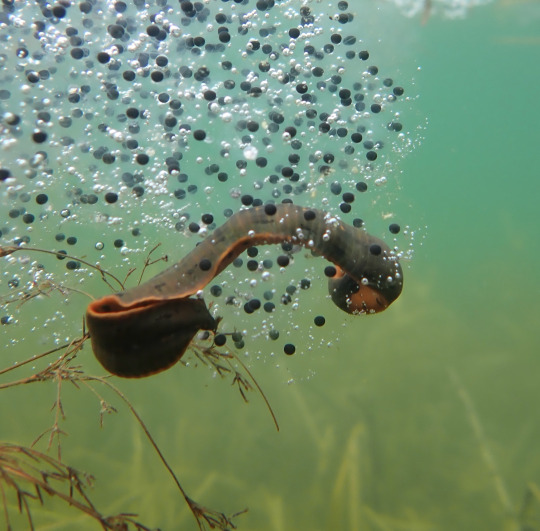
(image: a leech)
Of course the most famous leech feature (leechure) is how they feed. Around 75% of leeches are parasites while the remainder are predators. Leeched can be loosely divided into proboscis leeches and proboscisless leeches. Proboscis leeches can use their proboscis like a mosquito's, piercing the skin to reach the blood. Those without proboscises have other methods of feeding, including using jaws to bite into a host. At least one species has three jaws, a unique trait. Feeding on blood is called hematophagy and many leeches do it. Blood is a very high energy food source with lots of lipids and proteins and many hematophagous animals, leeches included, can go long periods of time between feedings by storing extra blood inside themselves. Leeches inject their hosts with an anticoagulant called hiruden, which keeps the blood flowing. Predatory leeches target small invertebrates and usually swallow their prey whole. Leeches lack many important digestive enzymes, forcing them to have a symbiotic relationship with internal bacteria who generate the necessary chemicals.

(image: microscope image of a medicinal leech's mouth)
Leeches are, of course, famous for their use in medicine. Leech therapy or hirudotherapy has been used as far back as 3,500 years ago in Egypt and has been recorded in many places, including India, China, Arabia, and throughout Europe. In Europe, this was driven largely by humeric theory, the idea that four humors (blood, phlegm, black bile, and yellow bile) controlled the body and sickness was caused by them being out of balance. Leeches, particularly the medicinal leech (Hirudo medicinalis) were used to remove excess blood. This fell out of favor with humeric theory, but the use of leeches in medicine saw a comeback in the 1970s. This time the purpose wasn't to grain blood, but to use the hiruden anticoagulant to induce blood flow. Individual leeches have too little hiruden to make extracting it practical, so doctors will put live leeches on the body in places that need that blood flow.

(image: a leech on someone's hand)
Leeches are rarely harmful to humans. Most species will latch on long enough to drink their fill and drop off when they are done. They can transmit disease (though this is rare) and some people are highly allergic to them. There is also a risk of infection from the wound the leech creates. Some leeches are large enough that their bites are very painful. There is some danger from improperly removing a leech. Their stomachs don't sterilize what they eat and grabbing one can cause it to regurgitate into the wound, leading to risk of infection. To safely remove one, find the mouth (usually on the narrower end) and use something broad and flat like a credit card, dull knife, or long fingernail to slide under the moth and break the suction. You can do the same to the back sucker or just pull it off.
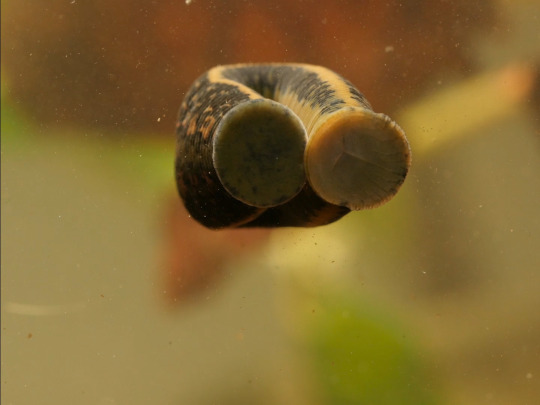
(Image: a leech showing the front and back sucker)
#wet beast wednesday#biology#zoology#ecology#animal facts#leeches#leech#parasite#cw blood#worm#annelids#Youtube
91 notes
·
View notes
Text
thinking about spherus magna so so so much and i NEED to write about the tribes and their bodies and their eating habits
to start off - agori and glatorian are like dogs and wolves: same progenitor, compatible to create hybrids capable of reproduction, different appearances and strengths but similar genetic curriculum.
the seven tribes have specific differences in appearance but most of their anatomy is still the same - humanoid, sharp spaced teeth, vestigial minuscule stubby tail, flat nose, small ears. cross-tribe children weren't very common before the shattering (big ass planet and all) and might become more common as time passes (lots of people died and whatnot), but due to there being no real hierarchy in the gene pool they wont necessarily be perfect hybrids of their parents: more often than not they will resemble only one of them, or showcase smaller traits of the other.
Tapyri (Fire tribe) - oval pupils stretched horizontally, tough skin that secretes a layer of protective mucus good for hot dry climates. different skin pigmentation in the form of spotted patterns, mostly on the back, is surprisingly common.
Gaquri (Water tribe) - crescent pupils stretched horizontally, drop-shaped sturdy scales that slightly overlap. hands and feet are lightly webbed between their fingers, while the eyes have a protective lid for underwater diving.
Lebori (Jungle tribe) - beaded pupils stretched vertically, short thin feathers, mostly greenish, which generally have little use. fingertips, palms and soles have small hooked cells to better their grip when climbing trees and rocks.
Koniri (Ice tribe) - rhomboidal pupils stretched vertically, thick fur that sheds and changes color depending on the seasons. powerful nails and bite, build up fat much easier than other tribes and are incredible sprinters on short distances.
Banuri (Sand tribe) - slit pupils stretched vertically, very small polygonal scales tightly placed together. small sharp horn-like protrusions all over the body, mostly the head, and remarkable adaptability to varying temperatures.
Potori (Rock tribe) - rectangular pupils stretched horizontally, wooly fur that varies in thickness depending on place of origin*. duller teeth, immune to most poisons, have heightened endurance in harsh climates and tougher bones.
Fezeri (Iron tribe) - round pupils similar to a photocamera's aperture, sectioned carapace not unlike that of an insect over skin. have a tendency to develop reddish crusts with age which need to be removed through cyclical moltings.
when it comes to food. oh baby.
ANY CREATURE in the desert is fair game. theyre most of the meat available and by god these people will Fucking Get It or die trying. blood is both cooked and drunk (usually on special occasions) and is often given to sickly, pregnant or young individuals; bones are generally split open for marrow, but while smaller ones can be grated or used to make stock broth, the bigger ones are kept to make weapons or tools - the only ones that eat them are the Bone Hunters, which is why they're called that in the first place, and the Zesk and Vorox, who have built in weapons.
Tapyri have very fertile soil but horrendously high temperatures, so they can grow only a select few plants, mostly cereals. common foods are iron snails and a type of edible lava residue, but a real delicacy is the elusive heat-resistant mole, which is incredibly fat and tender but also fucking FAST. they cook mostly on slabs of rock heated over lava, or on roasts
Gaquri eat anything that enjoys humidity - slugs, leeches**, tadpoles, frogs, other small amphibians, fish and crustaceans if they had any. their vegetables are cave mosses and freshwater algae or kelps - a specific type produces "kelp jades", round fruits that are sticky as hell. they tend to eat things raw, but can also afford to steam or boil their stuff
Lebori have the vastest array of fruits and greens available thanks to living in the green lung of a fucking desert and everybody imports that good stuff from them. their local protein source is comprised mostly insects***, worms and other invertebrates, which they employ in various methods. since they have access to oil, they often default to frying food
Koniri have access to small game and a discrete amount of forests in which they've learned to recognize edible berries, leaves and especially branches. a typical dish for them is a bundle of sticks wrapped in very far strips of meat. in some lakes they also harvest a strange type of anemone. when they don't freeze-dry their food, they tend to either boil or roast it
Banuri relied evenly on hunting, gathering, and husbandry. Zesk and Vorox have adapted thoroughly to the desert ecosystem, and while the first still gather lichens, the latter most hunt in packs
Bone Hunters, being scavengers, eat anything and everything; the Skrall had a more plant-based diet, but in Bara Magna added salt-dried meat; other Potori prefer vegetables like briars and thistles
Fezeri lived in fairly comfortable climates and could afford a pretty varied and balanced diet. Telluris allegedly eats, but nobody can confirm. Sahmad is trying to fuckin survive. give him a break
*Bone Hunters, native to the Bara Magna area, resemble goats; the Skrall, native to a snowy mountain area, resemble sheep. similar cases are found in all tribes across Spherus Magna (ex. BaMa lebori are more akin to geckos, BoMa lebori to lemurs)
**Gaquri would, as such, be the first to try and eat a kraata or krana without even thinking about it. the consistency would not bother them, but they would be mostly perplexed to discover there's food that tastes, respectively, "dark" and "bright"
***scarabax beetles not included, because they taste horribly and are not worth the effort of catching to feed off of them for anybody. Click will live forever
#bionicle#spherus magna#bara magna#agori#glatorian#skrall#bone hunters#zesk#vorox#random talks#hi. it is currently (looks at clock) Fuckin Late. and i just discovered that the prefix for gravity is ba- and for magnetism is fa-#i think i got most of my thoughts out of myself#apart from various physical reactions for the tribes BUT. i am. tired.#i also have Thoughts on food in the matoran universe and stuff but thats for!!!! another day#in the meantime. have this. if you would
17 notes
·
View notes
Text

Acute Bladder Snail (Physella acuta)
Family: Bladder Snail Family (Physidae)
IUCN Conservation Status: Least Concern
A common resident of ponds, lakes and streams across much of Europe and North America, the Acute Bladder Snail spends the vast majority of its life underwater but can only extract oxygen from air, so must regularly climb to the surface to re-fill an air-filled bladder within its shell (earning it its name.) Hardy and fecund, members of this species feed on aquatic plants, algae and detritus and rely on their curled shells for protection against their many predators, which include numerous small fish, freshwater turtles, non-parasitic leeches and larger carnivorous snails - should a predator grasp or bite them, Acute Bladder Snails are capable of using a unique muscle to furiously waggle their shell in an attempt to shake them off before detaching from the surface they are attached to and attempting to sink to safety. Like most gastropods Acute Bladder Snails are hermaphrodites (with every individual producing both sperm and eggs) and are capable of fertilizing their own eggs, although where possible they show a preference for mating with other members of their species instead (likely because self-fertilization reduces the health and fitness of offspring due to a lack of genetic diversity.) Following mating, members of this species lay dense clusters of tiny eggs covered by protective gelatinous sacs, which they typically attach to the stems or leaves of aquatic vegetation.
---------------------------------------------------------
Image Source: Here
#Acute Bladder Snail#acute bladder snail#bladder snail#snail#snails#zoology#biology#malacology#animal#animals#wildlife#gastropod#gastropods#European Wildlife#North American Wildlife#mollusc#molluscs#mollusk#mollusks#aquatic wildlife#pond wildlife#freshwater wildlife#invertebrate#invertebrates#freshwater invertebrates
16 notes
·
View notes
Text
Astonishingly difficult to get nice footage of the little guy—because to film this I was using my right hand to hold up my phone while using my left hand to hold up a loupe against its camera lens—but look at this adorable flatworm having the zoomies.
So cool how his whole head stretches and distorts to squeeze between the clumps of algae in his path.
This is footage of my freshwater ecosphere. Just a big ol' jug of pond-water from the stagnant creek near my house, plus a big scoop of its sludgy silt and some dead leaves and things that I scooped up with it. Then I screwed the lid on tight, plonked it down on my windowsill to get plenty of light, and have left it be for the past 3-ish weeks.
Initially, the main forms of life were a few dozen tubifex worms, doing their frenetic tubifex dance; plus a couple of aquatic snails, a worm, and many mosquito larvae.
The mosquito larvae hatched over time (and perished in the jar because I didn't open it to free them, so they returned to feed the waters from whence they came), I spotted a leech in there, the snails started breeding, and the tubifex population crashed (I think the leech was preying on them)
Now the water is dancing with copepods, the snails are going ham on the biofilm growing everywhere, and there's so much algae that the water is bubbling with so much oxygen that it almost looks like carbonated mineral water.
And of course there are these cool flatworms zooming around too. (This guy being one of the biggest; about one centimetre long)
Such a cool project, and I'm so glad I started it. All the joys of an aquarium with zero of the effort. 🥰
9 notes
·
View notes
Text


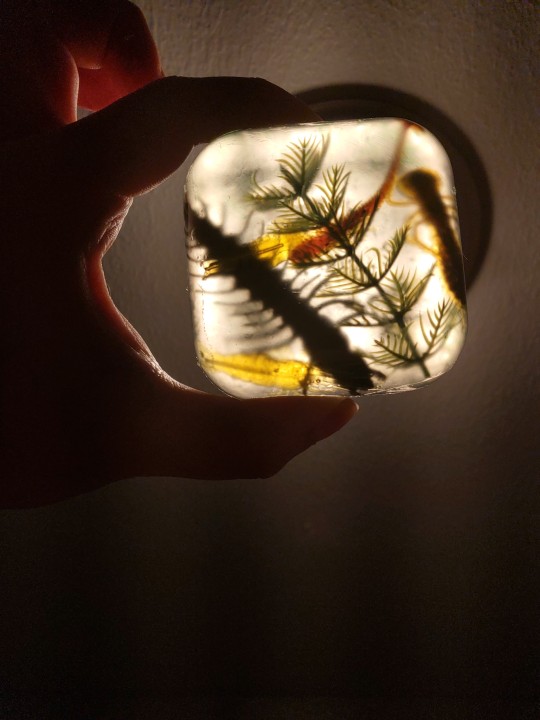
Okay this is currently just plain unscented glycerin soap with some coloring but here's my first experimental pond life soap bar, as you use it up you get a fake plant and rubber freshwater invertebrates (originally fishing lures, all their oil and scenting washed off) currently representing freshwater shrimp, a leech, a dragonfly nymph and a hellgrammite (dobsonfly larva) though I have some more varieties coming.
Looking into scent oils that might smell suitably swampy but haven't found much yet.
I might print a little fact sheet about each species represented and pack that in with them if I sell these.
390 notes
·
View notes
Text
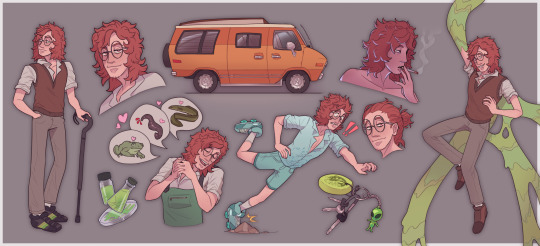
Ashton Miller / April 1st, 1969 / they/them / Stand user
Ash is a scorned outcast who wants to use their abilities to protect the few people that care about them, and fail doing so.
-
Character Notes:
Ash is uncaring about their appearance, and speaks without regard for others' feelings.
Due to their tumultuous childhood, they engage in intense attention-seeking behavior and are very clingy.
They only really care about others' feelings if they can get something out of them.
Will act pathetically for attention, but only wants pity when it's on their own terms.
They are willing to be patient and see eye-to-eye with people who they can relate to (or project themself onto).
Ash, over all things, wants to be seen as competent and self-sufficient, despite being generally weak and incompetent.
They have the emotional intelligence of a goldfish.
-
Likes: Sleeping, outdoor activities, freshwater ecology, shirking their responsibilities
Dislikes: Liars, thunderstorms, crying around others, feeling helpless
-
Short Bio:
Ashton grew up in a small town in the southwestern US, where they were generally ostracized and raised hell over it. After a traumatic event in where their best friend lost her life, they were kicked out from their home and attended university out of their converted camper van. Looking for a complete change in scenery, they go to graduate school in Florida. Eventually, they give themself a Stand in 2000 and work for the Speedwagon Foundation to track down less "dangerous" Stand users.
-
Stand Info:
Stand Name: Spyro Gyra
Ability: Algae growth and manipulation.
Ash's Stand can grow algae from a medium with incredible speed, as well as convert their own body into an amorphous algal mass; due to the nature of their ability, the algae they grow and morph into is visible to non-Stand users and is only as "strong" as Ash is, which is to say not strong at all.
Spyro Gyra cannot speak, but can at times act out on its own according to Ash's subconscious thoughts- it will berate them for doing or saying stupid things they know are rude. Due to this separation of conscious and subconscious, if Ash spends a long time completely engulfed by their Stand, they will begin to lose their sense of self.
-
Relationship Info:
Ash and Jotaro both met in grad school, though it took a long time for the two to actually begin to form a friendship since they have very opposing personalities.
Once they ran out of people who would give them the time of day, Ash would start bugging Jotaro to go and smoke with them until he relented and said yes.
Their friendship oddly enough worked out quite well; Ash likes to hear themself talk and Jotaro wasn't pressured to give a response, so he would just listen most times.
Ash being an odd and non-judgemental freak lets Jotaro feel like he can confide in them, strangely enough.
Their relationship is REALLY a push and pull, since Ash is very clingy and Jotaro is very reserved, both for very personal reasons.
Because of their similar situations with trauma and lack of emotional support, they help each other cope.
When their relationship goes past being just friends, neither of them puts a name on it, they just do whatever the other is comfortable with.
It would be really irresponsible for Jotaro to have another dedicated relationship after everything with his ex-wife, and Ash doesn't want him to leave them, so their relationship always remains vague and rarely acknowledged.
They're not in a dedicated or exclusive relationship, but it's not as if they act distantly toward each other.
Ultimately, Ash wants to be the one to protect Jotaro, but can't no matter how hard they try because they are just too weak, even with a Stand they still wouldn't be able to handle anything that would be a threat to him.
oh my god they were colleagues
-
Other facts:
Ash did their graduate thesis on leech homeobox genes, though they prefer field work to laboratory work any day.
Even when they're well off, they always live very frugally.
Despite their disheveled appearance, they are pretty hygienic, they just don't put a lot of effort in beyond the bare minimum (so no, they aren't a greaseball).
They love to roller skate, but they are also very accident prone.
When they were in high school, they used to spread alien conspiracy theories for fun.
Ash may be weak and at times a coward, but they aren't afraid to whack people with their cane if they act out of line.
They have a complex where they always want to be the provider in every relationship they are in, to be the one wearing the pants.
Ash is of course very flippant toward strangers, but once they want someone to stick around/they fall in love, they start doing crazy shit just to get them to stick around. This usually backfires.
tl;dr the world's most pathetic stand user wants to protect the most powerful stand user and fails, but the ride was worth it anyways
#ashton#my art#my god I spent forever on this fucking art lmao#mostly cuz I know I wanted this to be my pinned post#jjba#jjba oc#oc x canon#oc/canon#im so fucking crazy thinking about them i s2g#jotaro kujo#ash x jotaro
36 notes
·
View notes